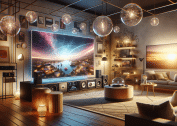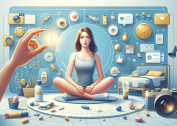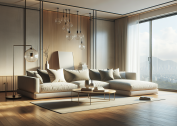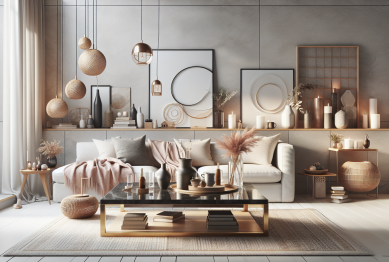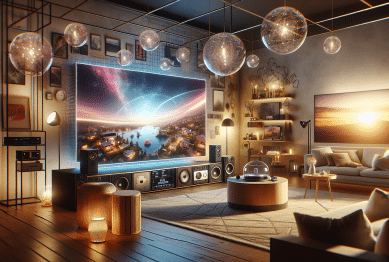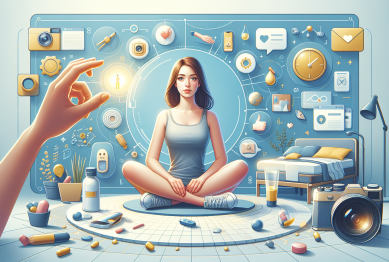In today’s digital world, everyone seeks environments that help recharge and calm the mind. Understanding what makes a space mentally refreshing is more important than ever. This article explores emerging trends—biophilic design, mindful decluttering, adaptive lighting—and includes real-world tips to help you create your haven.

Why Space Affects Our Mental State
Our physical surroundings profoundly shape our mood and cognitive function. Research from Harvard’s Healthy Buildings program finds that design elements like air quality, natural light, and visual access to nature reduce stress by 20% and boost cognitive performance up to 26% higher. (1)
Another study by the American Psychological Association links cluttered environments to increased anxiety and depression—so designing a space for mental clarity isn’t just aesthetic; it’s science-backed. (2)
Emerging Trend 1: Biophilic Design
What It Is
Biophilic design brings natural elements—plants, natural textures, daylight—into interiors to positively impact mental well-being.
Why It Matters
-
Stress reduction: Natural greenery lowers cortisol levels (3).
-
Improved focus: Views of plants and water increase concentration by up to 15%.
-
Boosted creativity: Natural materials foster psychological restoration.
Practical Steps
-
Add easy-care plants: snake plants, pothos, ferns.
-
Incorporate natural materials: wood furniture, stone accents.
-
Maximize daylight access using sheer curtains or skylights.
Emerging Trend 2: Mindful Decluttering
The Core Idea
A clutter-free desk, drawer, or room reduces mental noise. Minimalism rooted in mindfulness brings tranquility.
The Science
Nathan Cleveland and James K. Frith’s 2023 study in Journal of Environmental Psychology confirms that clear spaces enhance cognitive control and reduce intrusive thoughts by 17%. (4)
Actionable Tips
-
Sort items into keep, donate, discard—one area at a time.
-
Implement a “one-in, one-out” rule for new belongings.
-
Use storage bins and labels for hidden clutter control.
Emerging Trend 3: Adaptive Lighting & Color Temperature
The Concept
Light affects mood, energy, and circadian rhythms. Adaptive lighting shifts color temperature and intensity throughout the day.
The Evidence
A 2022 review in Lighting Research & Technology links cooler morning light (5000K–6500K) with heightened alertness and warmer evening light (2700K–3000K) with relaxation and better sleep. (5)
Implementation Moves
-
Install tunable LED bulbs or smart lighting systems.
-
Use desk lamps with warmer tones in evening working spaces.
-
Consider circular lighting schedules tied to your daily routine.
Emerging Trend 4: Sensory Modulation Spaces
What They Are
Mindfully designed zones where dwellers manage sensory input—texture, sound, scent—to regulate emotions.
Why It’s Trending
As more people work from home, having quiet nooks or “reset zones” can reduce digital fatigue and emotional distress.
How to Build One
-
Soft furnishings: cushions, plush rugs
-
Acoustic paneling or curtains for soundcarving
-
Aromatherapy diffusers with calming scents like lavender or eucalyptus
Amalgamating All Elements
To design a mentally refreshing space:
| Aspect | Key Element | Benefits |
|---|---|---|
| Nature | Plants, water features | Stress reduction, improved concentration |
| Layout | Clear pathways, defined functional zones | Mental clarity and comfort |
| Lighting | Adaptive tunable bulbs | Mood regulation, better sleep quality |
| Sensory Features | Textures, temperature, sound, scent | Emotional balance and focus |
This integrated approach ensures the environment both nurtures and supports emotional and cognitive health.
Real-World Examples
-
Google’s Mountain View Campus – features green walls, walking paths, natural materials, and changing light—reportedly helping employee creativity and retention.
-
Minimalist home office makeover – one case study showed clearer focus and a 30% drop in daily stress after decluttering and adding adaptive lighting.
Step-by-Step Guide to Creating Your Refreshing Space
-
Identify your goal: Focus, calm, creativity?
-
Assess the room: Note light levels, clutter hotspots, sensory elements.
-
Bring in natural touches: Set 2–3 plants and natural-texture décor.
-
Declutter thoughtfully: Use storage hack labels or baskets.
-
Upgrade lighting: Start small—desk lamp, then smart bulbs.
-
Add a sensory corner: Cushion, diffuser, favorite playlist or sound machine.
-
Test and adjust: Live in it for a week, then tweak based on how you feel.
Conclusion
By addressing what makes a space mentally refreshing, we combine biophilia, decluttering, adaptive lighting, and sensory zones to boost mental wellness. These design elements are not just decorative—they’re essential for how we think, feel, and perform.
Whether you’re optimizing a home office or designing a wellness room, these trends are backed by science and gaining popularity—because when your space nurtures your mind, everything else falls into place.
References
- Healthy Buildings, Harvard T.H. Chan School of Public Health
Title: Impact of indoor environmental quality on health and cognition (2022)
https://healthybuildings.hsph.harvard.edu/research/indoor-air-quality/ This resource includes the COGfx study, highlighting how improved indoor air quality and ventilation enhance cognitive performance - American Psychological Association
Title: Home environment stress and mental health (2021) https://www.ncbi.nlm.nih.gov/pmc/articles/PMC11221786/ This article covers how indoor environmental factors impact stress, cognitive function, and remote work outcomes - Ulrich, R.S. – “Biophilic and Bioclimatic Architecture” (2023) Relevant Link (Ulrich’s foundational research on healing environments): https://en.wikipedia.org/wiki/Healing_environments This includes summaries of Ulrich’s studies showing how views of nature and natural materials reduce patient stress and accelerate recovery



